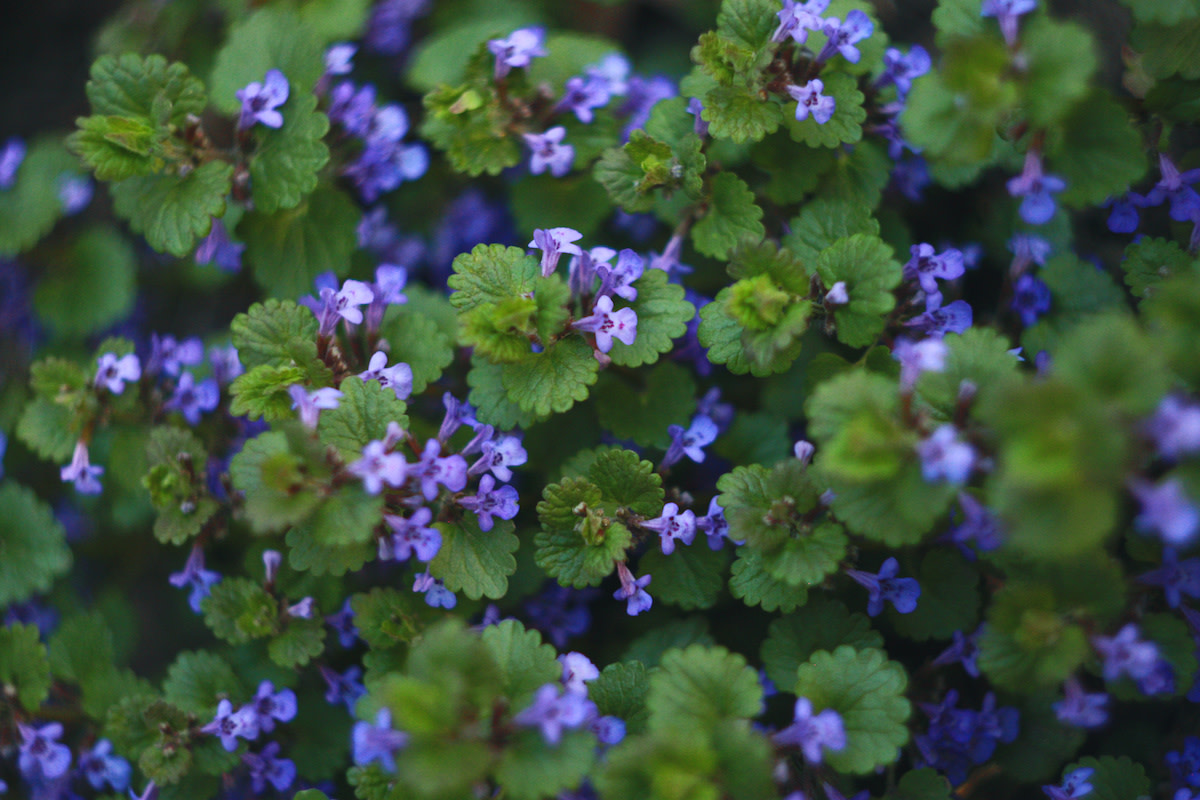Creeping Charlie Plant Guide: How to Manage Creeping Charlie
Written by MasterClass
Last updated: Jun 7, 2021 • 3 min read
After arriving in the US in the 1800s, creeping Charlie has become a prolific invasive weed.
Learn From the Best
What Is Creeping Charlie?
Creeping Charlie (Glechoma hederacea)—also known as ground ivy, gill-over-the-ground, and creeping Jenny—is an herbaceous perennial evergreen that belongs to the mint family. As a member of the mint family, it spreads via surface roots called stolons that creep along the ground. It thrives in moist, shady areas, but it will tolerate full sun.
Although most homeowners recognize the plant as a lawn weed, some choose to plant creeping Charlie as an alternative to turfgrass; it doesn't require mowing or any of the lawn care maintenance required by traditional lawn grasses.
What Does Creeping Charlie Look Like?
Creeping Charlie is a broadleaf weed. It has square stems that can reach lengths of up to two feet. It has scalloped leaves that vary in color from dark green to purple. In early spring, creeping Charlie produces tubular, purple flowers with red speckles. Its creeping stems form a dense groundcover.
How to Control Creeping Charlie
How you get rid of creeping Charlie largely depends on the level of infestation and your environment.
- 1. Remove creeping Charlie by hand. Hand-pulling the weeds is a great technique for small areas or areas near edible plants. Start by trimming back the leaves and stems with sharp garden shears, leaving enough of the stem to grip. Drench the area with a garden hose and wait half an hour for the water to soak in. Loosen the soil with a pitchfork to expose the roots and rhizomes. Grab the base of the plant and pull up to remove the roots. Inspect the area thoroughly for any roots left behind. If any of the roots or rhizomes are left in the soil, they will produce a new plant. This method is effective, but it might take a couple of passes to keep the creeping Charlie plant from coming back.
- 2. Smother creeping Charlie with newspaper or cardboard. By smothering the plant completely with newspapers or cardboard, you deprive the plant of the light it needs to grow. Within a week or so, the plant will die. Thoroughly rake the area, making sure that none of the rhizomes are left behind in the soil.
- 3. Use a weed killer. If you've got a small amount of creeping Charlie in an otherwise healthy lawn, use a post-emergent broadleaf herbicide that contains the active ingredients triclopyr and dicamba. These ingredients will target the plant without killing your grass. Apply herbicide in late autumn after the first frost when you’re sure it isn’t going to rain the following day; rain can spread the chemicals to other areas of your garden and down storm drains. Wait several days after an herbicide application to mow your lawn, and grow any plants you plan on eating far away from the sprayed area.
- 4. Practice caution with homemade chemical solutions. One common method used to kill creeping Charlie involves a homemade solution using borax, but improper use of a chemical-based home remedy can lead to boron toxicity in the soil. To avoid the pitfalls of a homemade solution, use store-bought chemical solutions only and follow the directions on the bottle. To protect yourself while applying herbicides, wear gloves, goggles, and protective clothing.
- 5. Choose the right herbicide for your lawn or garden. You can apply a post-emergent herbicide without killing your lawn. However, a broad-spectrum herbicide will destroy any vegetation it comes in contact with. It can also be harmful to people or pets, so be sure to avoid the treated area for at least a day after application.
Culinary Uses for Creeping Charlie
Young creeping Charlie leaves have a mild flavor reminiscent of mint. Harvest them, wash them, and add them to salads, soups, and sandwiches. You can also make a fresh creeping Charlie tea by steeping several handfuls of fresh leaves in a pot of boiling water.
Learn More
Grow your own garden with Ron Finley, the self-described "Gangster Gardener." Get the MasterClass Annual Membership and learn how to cultivate fresh herbs and vegetables, keep your house plants alive, and use compost to make your community—and the world—a better place.
